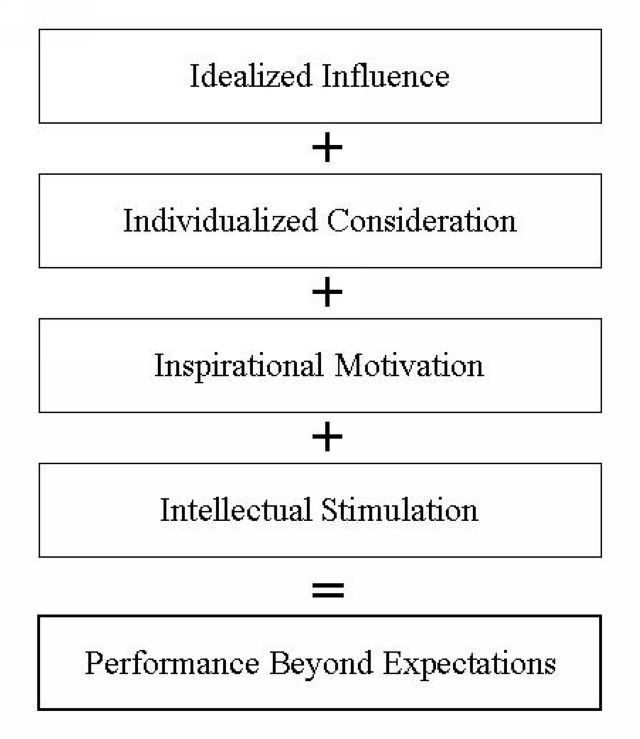
Credit: linetic/iStock/Thinkstock.com
Introduction
The role every manager must fill in the workplace is leadership. Managers often make the mistake of assuming that because they are the managers, they are also the leaders and that their employees (associates) will automatically follow. In reality, position only denotes title, not leadership. Northouse (2001) defines leadership as a process whereby one individual influences a group of individuals to achieve a common goal. To be an effective leader, the manager must influence his or her associates in a positive way to reach the goals of the organization. A transformational leadership approach can help managers become exceptional leaders. This article will explain the transformational leadership approach by discussing its strengths, weaknesses, and steps for application.
Transformational Leadership
To use this approach in the workforce, one must first understand exactly what transformational leadership is. In the simplest terms, transformational leadership is a process that changes and transforms individuals (Northouse 2001). In other words, transformational leadership is the ability to get people to want to change, to improve, and to be led. It involves assessing associates' motives, satisfying their needs, and valuing them (Northouse 2001). Therefore, a transformational leader could make the company more successful by valuing its associates.
One successful transformational leader was Sam Walton, founder of Wal-Mart, who often visited Wal-Mart stores across the country to meet with associates to show his appreciation for what they did for the company. Walton gave "rules for success" in his autobiography, one of which was to appreciate associates with praise (Walton 1996).
There are four factors to transformational leadership, (also known as the "four I's"): idealized influence, inspirational motivation, intellectual stimulation, and individual consideration. Each factor will be discussed to help managers use this approach in the workplace.
- Idealized influence describes managers who are exemplary role models for associates. Managers with idealized influence can be trusted and respected by associates to make good decisions for the organization.
- Inspirational motivation describes managers who motivate associates to commit to the vision of the organization. Managers with inspirational motivation encourage team spirit to reach goals of increased revenue and market growth for the organization.
- Intellectual stimulation describes managers who encourage innovation and creativity through challenging the normal beliefs or views of a group. Managers with intellectual stimulation promote critical thinking and problem solving in an effort to make the organization better.
- Individual consideration describes managers who act as coaches and advisors to the associates. Managers with individual consideration encourage associates to reach goals that help both the associates and the organization.
Effective transformational leadership results in performances that exceed organizational expectations. Figure 1 illustrates the additive effect of transformational leadership because managers must pull together the components to reach "performance beyond expectations" (Northouse 2001).

Each of the four components describes characteristics that are valuable to the "transformation" process. When managers are strong role models, encouragers, innovators, and coaches, they are utilizing the "four I's" to help "transform" their associates into better, more productive and successful individuals. Northouse (2001) states that in 39 studies of transformational literature, individuals who exhibited transformational leadership were more effective leaders with better work outcomes. This was true for both high- and low-level leaders in the public and private sectors (Northouse 2001). Therefore, it can be very advantageous for managers to apply the transformational approach in the workplace.
Strengths and Weaknesses of Transformational Leadership
As with any theory or approach to leadership, strengths and weaknesses become evident. Northouse (2001) identifies the strengths and weaknesses of the transformational leadership approach as follows:
- Strengths are widely researched (using well-known leadership strategies), and effectively influence associates on all levels (from one-on-one to the whole organization); strong leaders identify and emphasize associates' needs and values.
- Weak leadership may have too many components that focus superficially rather than identifying appropriate depth of engagement and treat leadership more as a personality trait than as a learned behavior; they have the potential for abusing power.
Applying Transformational Leadership
Because transformational leadership covers a wide range of aspects within leadership, there are no specific steps for a manager to follow. Becoming an effective transformational leader is an iterative process. This means that conscious effort must be made to adopt a transformational style. Understanding the basics of transformational leadership and the four I's can help a manager apply this approach. According to Northouse (2001), a transformational leader has the following qualities:
- empowers followers to do what is best for the organization
- is a strong role model with high values
- listens to all viewpoints to develop a spirit of cooperation
- creates a vision, using people in the organization
- acts as a change agent within the organization by setting an example of how to initiate and implement change
- helps the organization by helping others contribute to the organization
Conclusions
Transformational leadership is a vital role for effective managers because leader effectiveness determines the ultimate success of the organization. According to Hesselbein and Cohen (1999, p. 263), organizations that take the time to teach leadership are far ahead of the competition. By becoming familiar with the transformational leadership approach and combining the four I's, managers can engage as effective leaders in the business world.
Transformational leadership can be applied in one-on-one or group situations. Using this approach, the manager (leader) and the associates (followers) are "transformed" to enhance individual job performance and, as a group, help the organization be more productive and successful.
References
Hesselbein, F., and P.M. Cohen. (1999). Leader to Leader. San Francisco, CA: Jossey-Bass Publishers.
Northouse, P.G. 2001. Leadership Theory and Practice, second edition. Thousand Oaks, CA: Sage Publications, Inc.
Walton, S., and J.H. 1996. Sam Walton: Made in America: My Story. Canada: Bantam Books.